Choosing the Road Less Traveled: Our Engine Decision Story
Why we bet on Godot when everyone said we were crazy, and how it became the foundation for democratizing spatial creation
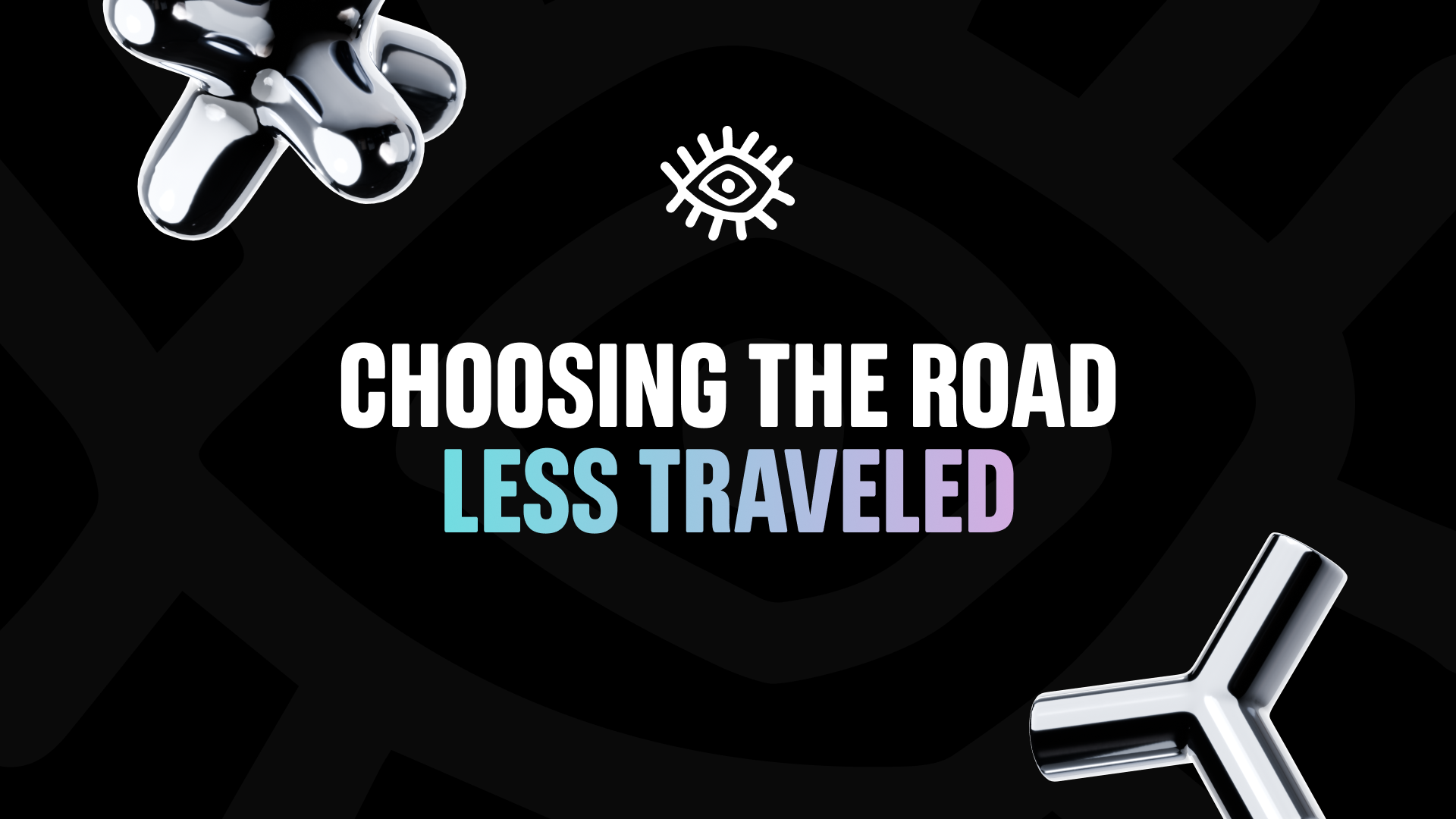
When we began building what would become anitya, we faced a decision that would define not just our technical architecture, but our entire philosophy about creator empowerment and the future of spatial computing. We had to choose our engine, the foundation upon which we'd build tools to democratize 3D creation for millions of visual creators worldwide.
The conventional wisdom was clear: go with Unity for market dominance, Unreal for cutting-edge graphics, or Mozilla Hubs for web-based VR. Instead, we chose Godot, a decision that seemed risky at the time but has proven to be one of our most strategic choices. This is the story of why we chose the road less traveled, and how that choice became inseparable from our mission to serve creators rather than constrain them.
The Crossroads: Evaluating Our Options
When we started our engine research in 2020, working alongside the Goethe Institute on early spatial experiences, we had three main contenders that seemed to dominate the conversation. Each had compelling advantages, but as we dug deeper, fundamental limitations emerged that would have compromised our long-term vision.
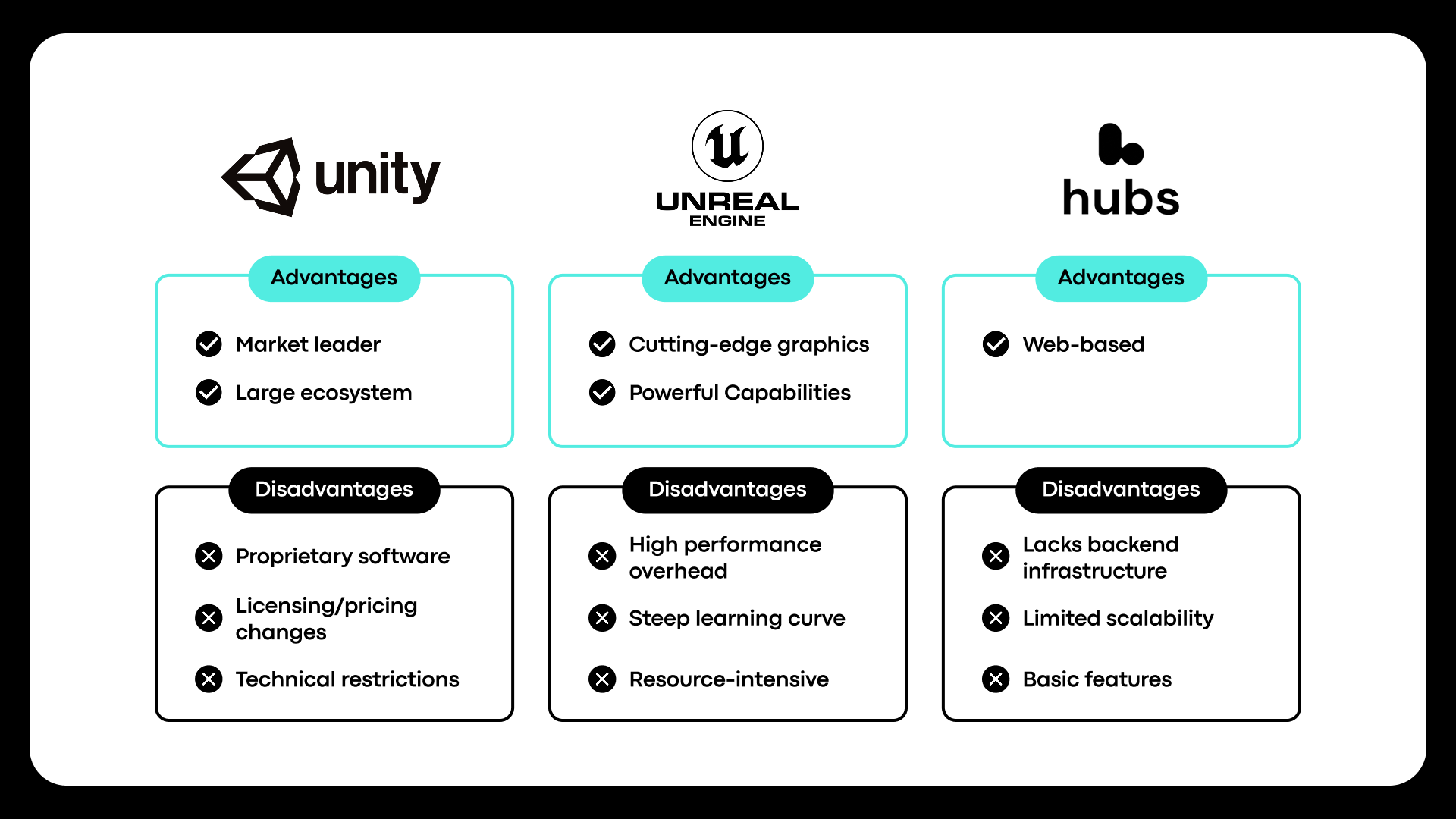
Unity: The Golden Cage
Unity was the obvious choice. Market leader, massive ecosystem, proven track record. But as we explored deeper integration possibilities, a troubling reality emerged: we would forever be dependent on Unity's decisions, roadmap, and business model.
Unity is proprietary software. When they change licensing terms, pricing models, or technical directions, developers have no choice but to adapt or abandon years of work. We couldn't modify the core engine to better serve our creators' needs. We couldn't optimize performance for the specific use cases that matter most in democratized spatial creation. We would be building a plugin on someone else's platform, forever constrained by their technical and business decisions.
For a company committed to creator sovereignty and long-term thinking, this dependency was unacceptable. How could we advocate for creator independence while building on a foundation that denied us the same independence?
Unreal: Power Without Accessibility
Unreal Engine offered cutting-edge graphics and powerful capabilities, but it came with a fatal flaw for our mission: it was simply too heavy for the devices and users we wanted to serve.
Our vision has always been about accessibility, enabling creators to build spatial experiences that work on VR headsets, AR glasses, mobile phones, and web browsers. Unreal's power comes at the cost of performance overhead that makes it unsuitable for the lightweight, cross-platform experiences we envisioned. When your goal is to democratize creation for millions of visual creators, not just serve AAA game studios with massive budgets, performance accessibility becomes paramount.
The learning curve was equally problematic. Unreal's complexity and resource requirements would have created exactly the kind of technical barriers we were trying to eliminate. We needed an engine that could power professional-quality experiences while remaining approachable for creators who think visually, not programmatically.
Mozilla Hubs: Limited Horizons
Mozilla Hubs offered an interesting web-based approach to VR, but it lacked the backend infrastructure and scalability we needed to build a comprehensive platform. There was no way to build the kind of attribution system, creator portfolios, and collaborative features that would become central to our vision.
Hubs was designed for simple virtual meetings and basic social VR, not for the complex creator economy we envisioned. We needed an engine that could support not just content creation, but the entire ecosystem of attribution, reputation management, and creator empowerment that would define anitya's unique value proposition.
Discovering Godot: More Than an Engine
Then we discovered Godot, and everything changed. What we found wasn't just a game engine, it was a philosophy that aligned perfectly with our values and vision.
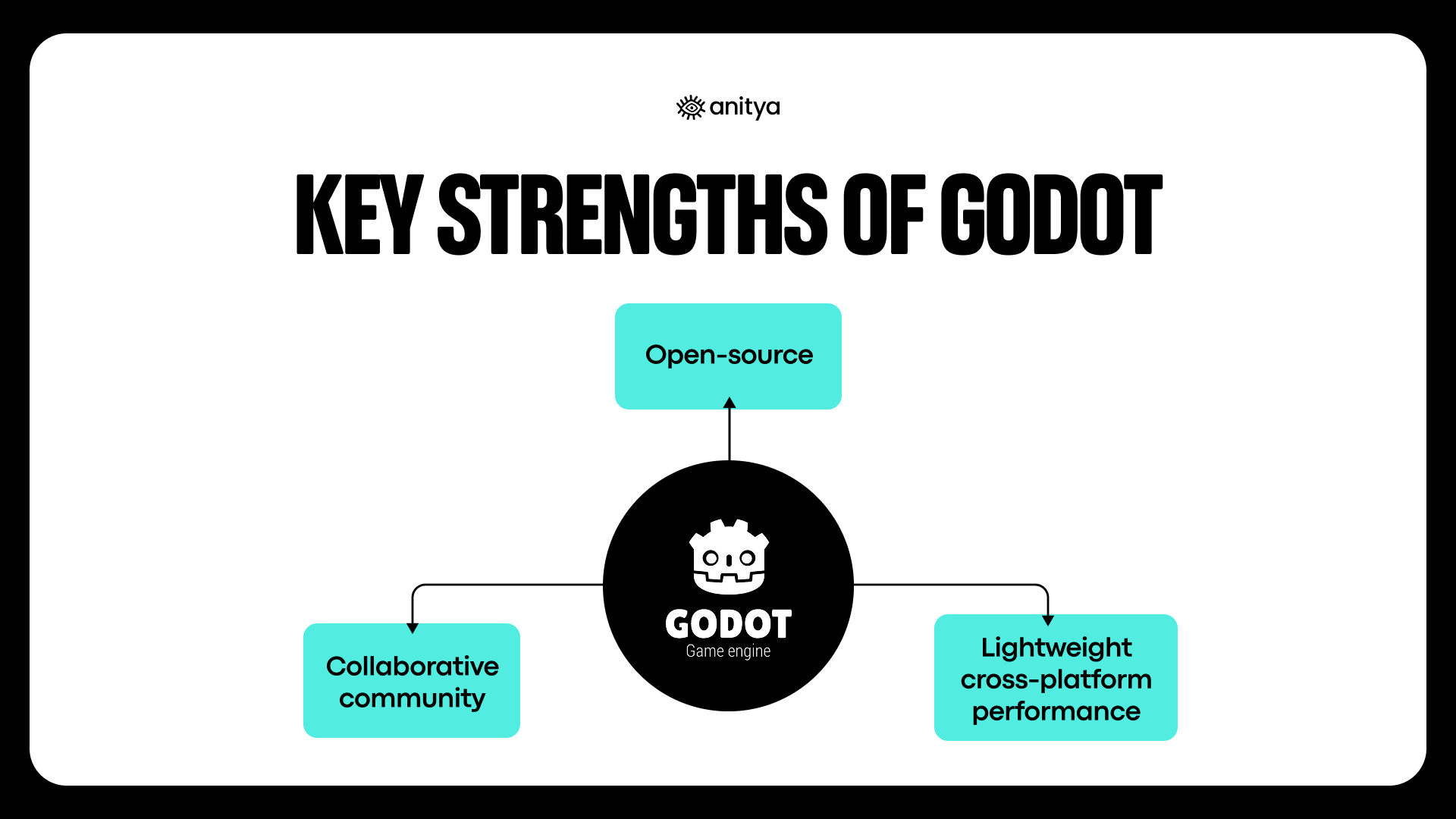
Open Source as Strategic Advantage
Godot's open-source nature wasn't just ideologically appealing; it was strategically essential. Open source meant we could modify the engine to better serve our creators' specific needs. We could optimize performance for the cross-platform accessibility that defines our mission. We could contribute improvements back to the community while maintaining the flexibility to innovate rapidly.
This wasn't about saving licensing fees, it was about maintaining the independence necessary to truly serve creators rather than shareholders of a proprietary engine company. In a world where we advocate for creator sovereignty, building on open-source foundations became a moral and strategic imperative.
A Community That Builds Together
The Godot community impressed us immediately. Unlike the corporate-controlled ecosystems around proprietary engines, Godot's community felt genuinely collaborative. Developers shared knowledge freely, contributed improvements openly, and maintained a culture of mutual support that reminded us why we fell in love with technology in the first place.
This community energy wasn't just nice to have, it was essential for our long-term success. When you're building tools for creators, you need a foundation that embodies the same collaborative spirit you want to foster among your users. Godot's community demonstrated that open development could produce software that rivaled or exceeded proprietary alternatives.
Code Quality That Impressed
Despite being open source and community-driven, Godot's codebase was remarkably clean, well-documented, and thoughtfully architected. The engine's design philosophy emphasized simplicity and clarity, values that aligned perfectly with our goal of making spatial creation accessible to visual thinkers rather than just programmers.
The more we explored Godot's architecture, the more convinced we became that it provided the perfect foundation for building creator-friendly tools. The engine's node-based scene system, intuitive scripting language, and modular design made it ideal for the kind of visual, drag-and-drop creation experience we wanted to enable.
The Turning Point: Bringing Ariel Aboard
Our conviction about Godot deepened dramatically when we began engaging with Ariel Manzur, one of Godot's co-founders. What started as advisory conversations evolved into something much more significant: Ariel joined anitya as our co-founder and CTO.
Having one of Godot's creators as our technical leader wasn't just a validation of our engine choice, it was a transformation of our entire technical capability. Ariel brought not just deep knowledge of Godot's internals, but the vision and experience of building developer tools that empower rather than constrain creativity.
With Ariel's leadership, our "longer road" with Godot became a strategic advantage. Instead of being limited by what an external engine company prioritized, we could shape our technical foundation to perfectly serve our creators' needs. We could optimize for the specific performance characteristics that matter in democratized spatial creation. We could build attribution and collaboration features directly into the engine level, creating capabilities that would be impossible as a plugin on proprietary platforms.
Betting on the Future: Why Godot Will Win
When we made our decision in 2020, Godot was still emerging as a serious alternative to Unity and Unreal. But we saw trends that convinced us Godot would become the dominant engine over the next decade.
The evidence is now overwhelming. Major games like the Portal Map Editor in Battlefield run on Godot. The engine has become the fastest-growing game development platform, with adoption accelerating as developers seek alternatives to proprietary engines with unpredictable licensing and business models.
But our bet wasn't just on Godot's technical capabilities, it was on the fundamental shift toward open, interoperable, and creator-friendly development tools. In a world where creators increasingly demand sovereignty over their work, open-source foundations become essential infrastructure.
Serving Creators, Not Developers
The statistics tell a compelling story about why our engine choice matters. There are approximately 3 million game developers worldwide, but over 300 million content creators. Our mission is to empower the 300 million visual creators who have been locked out of spatial content creation by technical barriers. Not the 3 million who already know how to code,
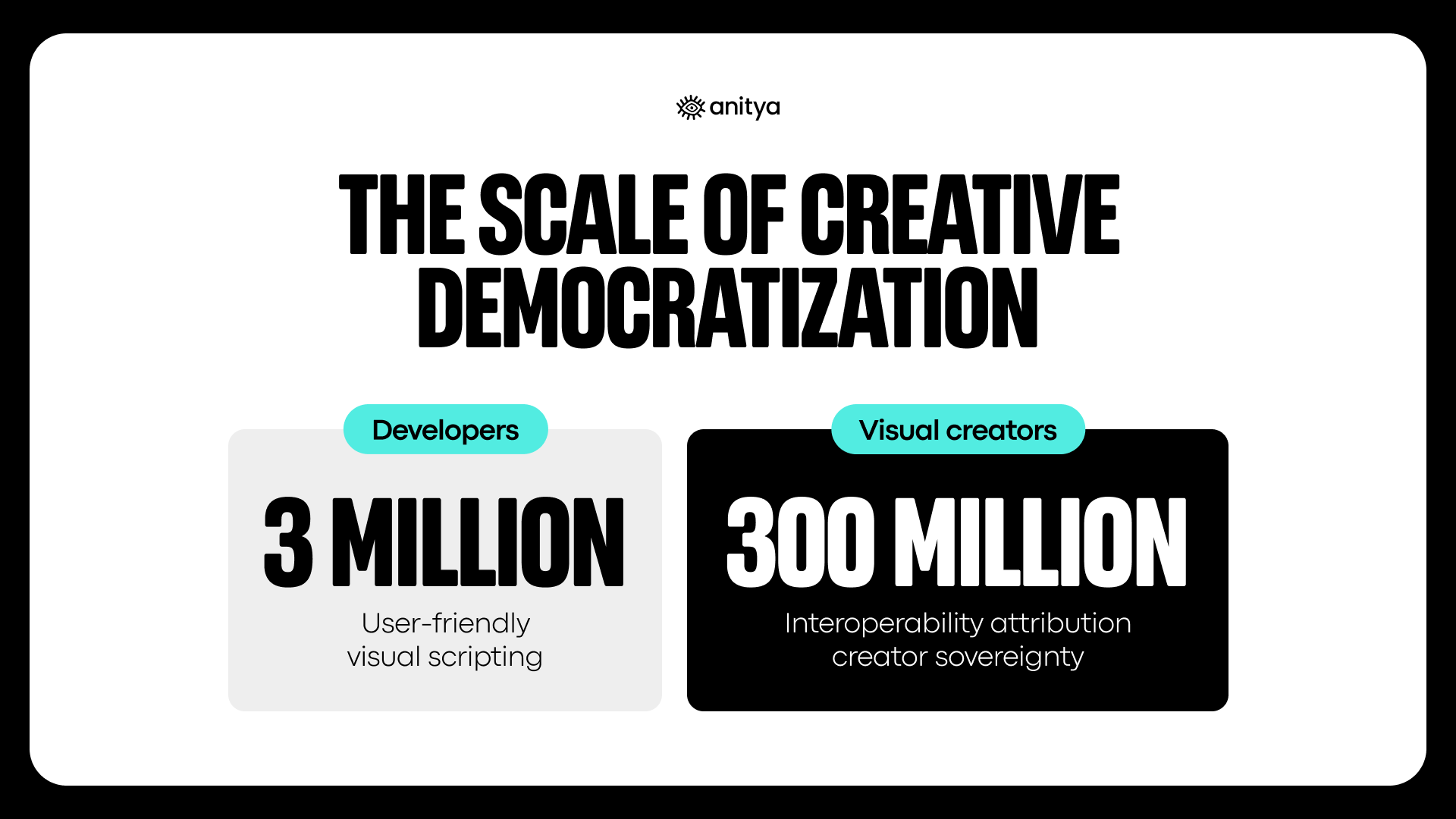
This 100x difference in addressable market its more than a business opportunity, it's about democratizing access to the tools that will define how humans interact with digital space. When AR glasses become ubiquitous and every surface becomes a potential canvas for spatial content, we want those experiences to be created by the full diversity of human creativity, not just the tiny fraction who happen to know C# or C++.
Godot's approachable architecture and our creator-focused tools built on top of it make this democratization possible. Instead of requiring creators to learn programming languages designed for engineers, we can build visual, intuitive interfaces that let creators focus on what they do best: storytelling, design, and user experience.
Attribution and Creator Sovereignty
Our engine choice connects directly to our broader vision of creator sovereignty and attribution. Building on open-source foundations allows us to implement attribution tracking, reputation management, and creator empowerment features at the engine level, capabilities that would be impossible as plugins on proprietary platforms.
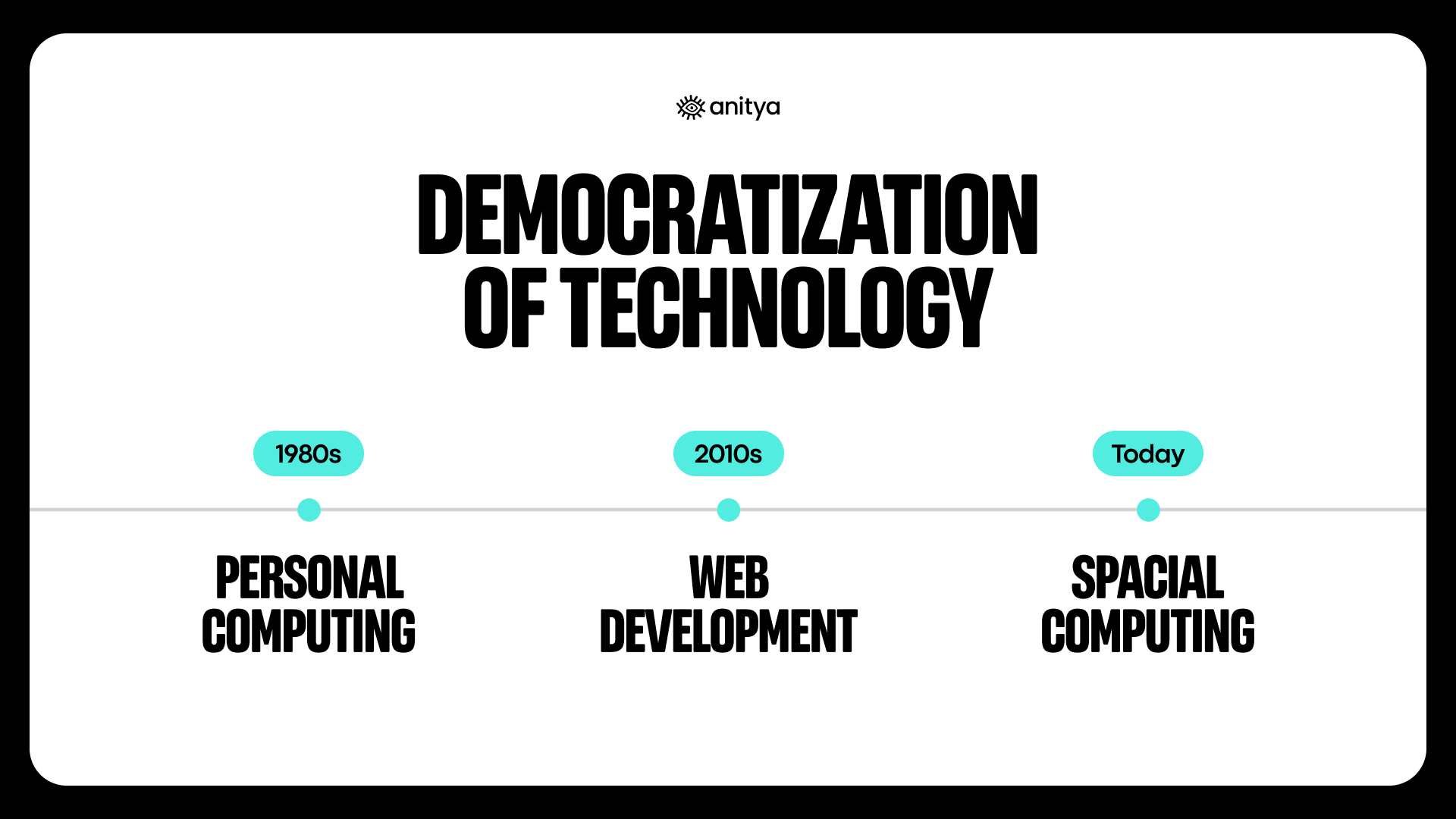
When creators build spatial experiences on anitya, every asset, template, and collaborative contribution is tracked with cryptographic attribution that persists across platforms and projects. This attribution system becomes the foundation for fair compensation, reputation building, and collective action that protects creators in an age of AI-generated content.
The interoperability that open-source enables is crucial for this vision. Creators' attribution records and reputation shouldn't be locked into any single platform, they should be portable, verifiable, and valuable across the entire spatial computing ecosystem. Building on Godot gives us the flexibility to ensure creator sovereignty is more than just a marketing message, but a technical reality.
The Longer Road, The Better Destination
Choosing Godot meant accepting that we'd need to build more infrastructure ourselves. Unity's mature ecosystem would have given us faster initial development, but at the cost of long-term flexibility and creator alignment. We chose the longer road because we knew it led to a better destination.
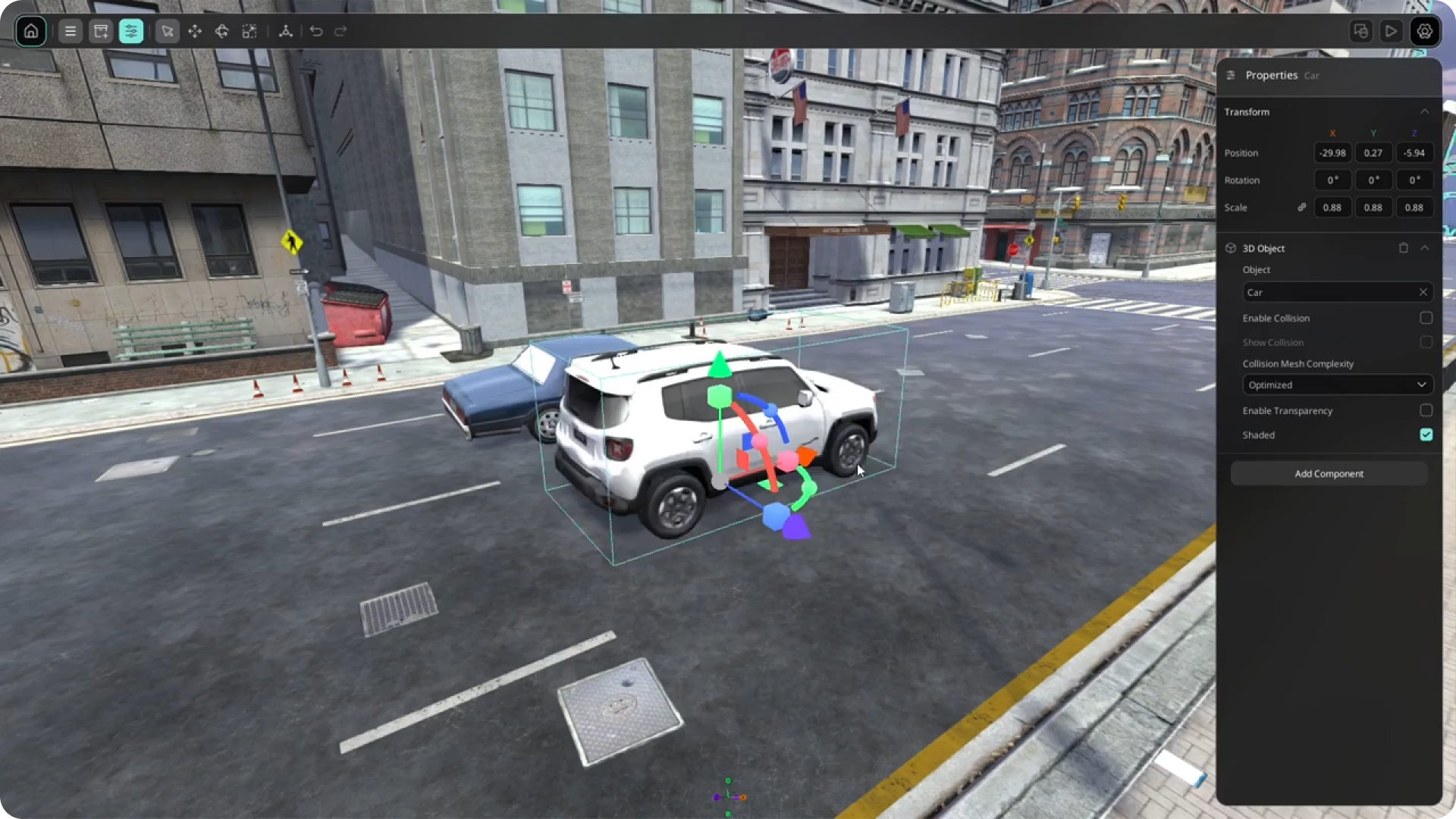
That longer road has required us to build many capabilities from the ground up. But each piece of infrastructure we've developed serves our creators' specific needs rather than the generic requirements of a broad game development market. Our attribution system, creator portfolio tools, and collaborative features are optimized for the visual creators we serve, not constrained by the limitations of someone else's platform.
We contribute improvements back to Godot while keeping our creator-specific innovations proprietary, a balance that lets us move fast and maintain competitive advantages while supporting the open-source ecosystem that enables our mission.
Building for Interoperability and Composability
The future of spatial computing will be interoperable and composable, not locked into proprietary silos. Creators will want to build experiences that work across VR headsets, AR glasses, mobile devices, and web browsers. They'll want to collaborate across platforms, remix each other's work with proper attribution, and maintain ownership of their creative contributions regardless of which tools they use.
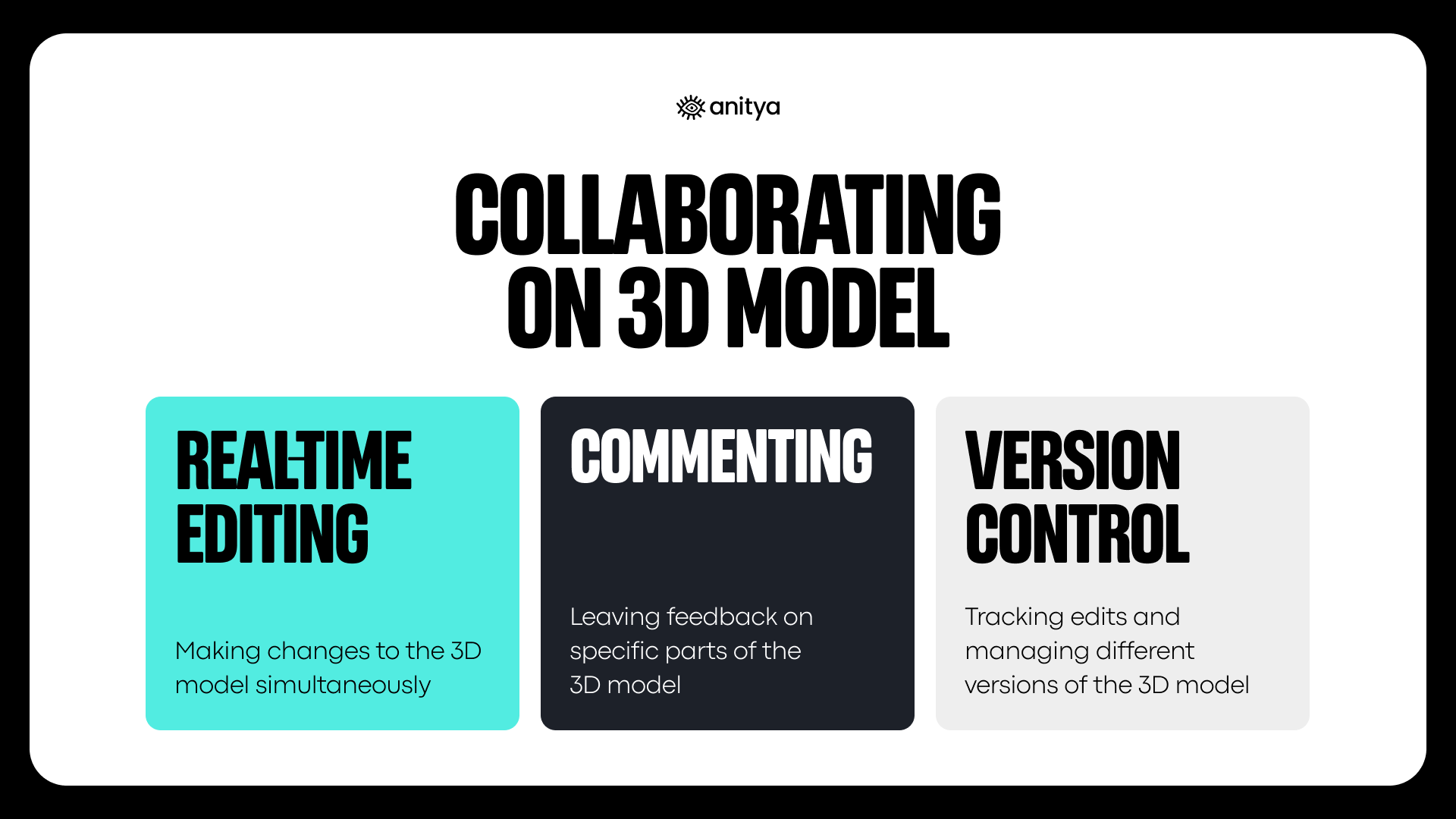
This future requires open-source foundations. Proprietary engines optimize for vendor lock-in and platform control, not for the creator sovereignty and cross-platform interoperability that will define the mature spatial computing ecosystem.
By building on Godot, we're not just choosing better technology, we're choosing to align with the values and technical architecture that will enable creators to thrive in an open, interoperable spatial computing future.
The Road Ahead
Our bet on Godot has proven prescient. The engine's rapid growth, technical maturation, and community energy have exceeded even our optimistic projections. More importantly, building on open-source foundations has enabled us to create creator tools that would be impossible on proprietary platforms.
As we look toward a future where 300 million creators have access to spatial creation tools, where attribution and reputation systems protect creator sovereignty, and where interoperability enables unprecedented creative collaboration, we're grateful we chose the road less traveled.
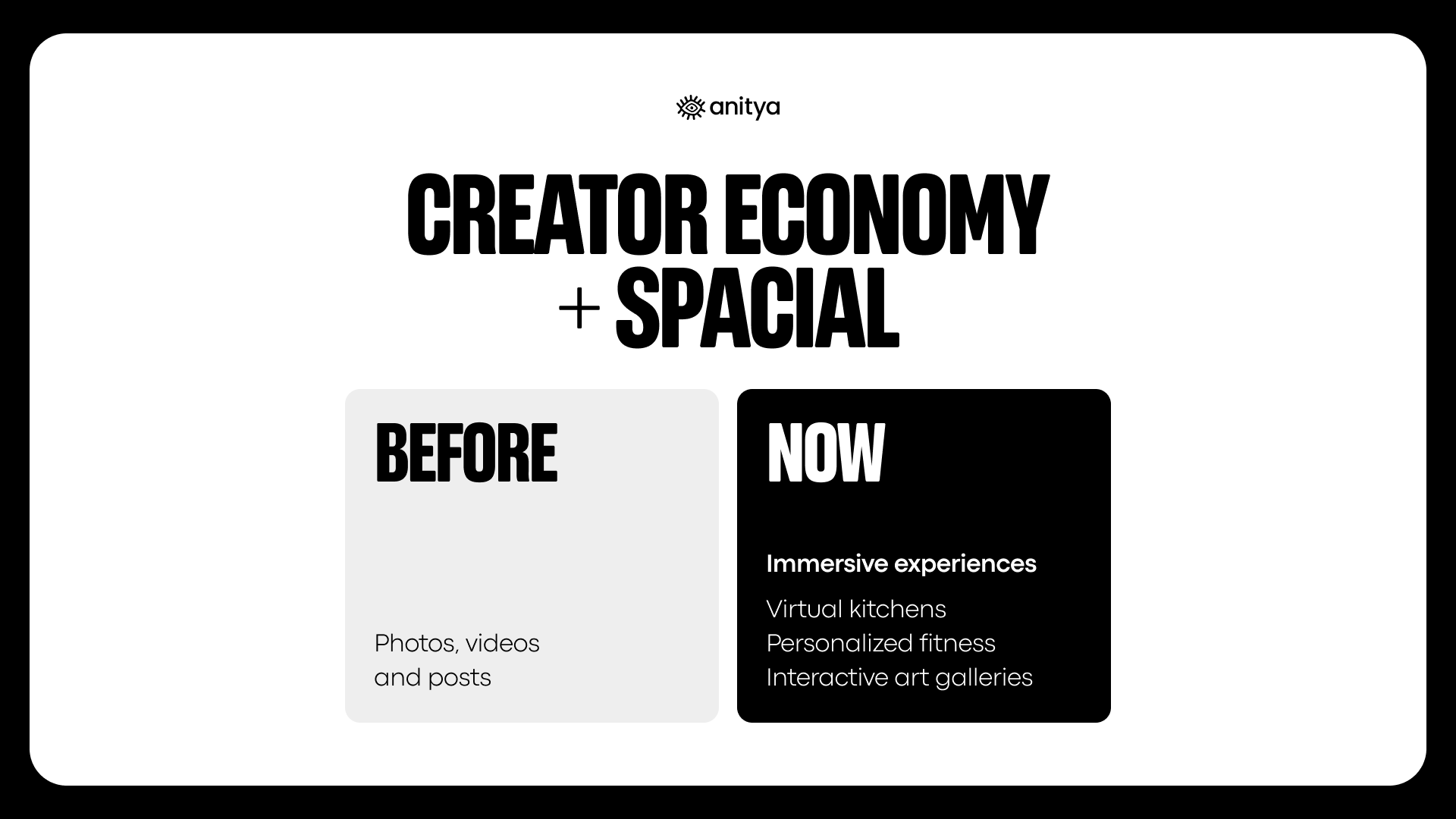
The conventional wisdom said to go with Unity for safety, Unreal for power, or Mozilla Hubs for web compatibility. Instead, we chose Godot for freedom, community, and alignment with our values. That choice has made all the difference, not just for our technology, but for our ability to truly serve the creators who will build the spatial internet.
Sometimes the road less traveled is longer, more arduous but leads to a better destination. For creators, for innovation, and for the future of spatial computing, choosing Godot was choosing to build on foundations that empowers rather than constrains. That choice continues to define everything we build.
_________________________________________________________________________________________________________________________________________
This is Part 2 of a 3-part series on the spatial computing revolution.
Pedro Jardim is a spatial computing entrepreneur and advocate for democratizing XR creation tools. He is the founder of anitya, a platform that enables anyone to create immersive 3D experiences without coding.
